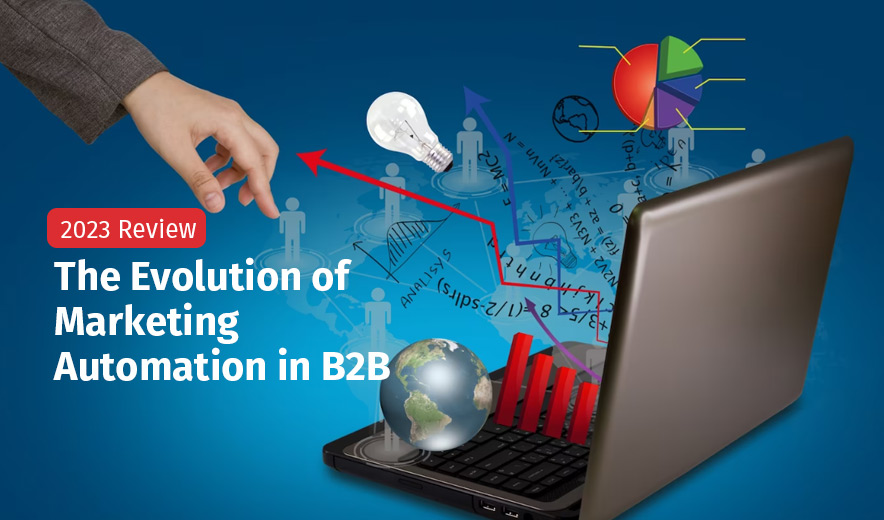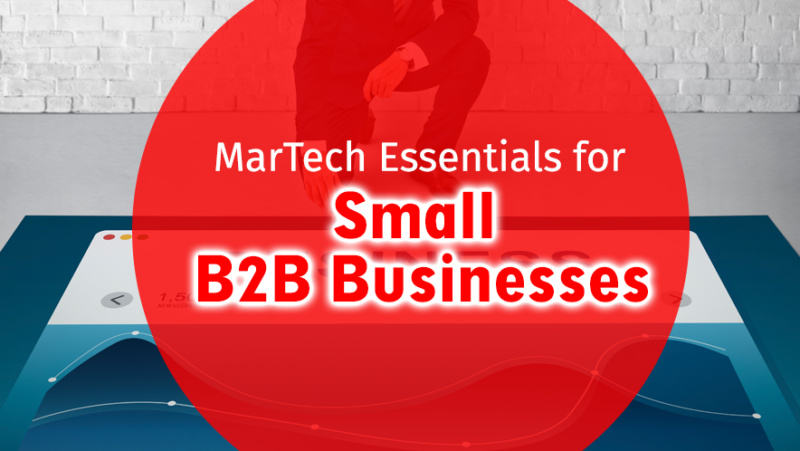In recent years, marketing automation tools have undergone significant developments, adapting to the evolving landscape of digital marketing. One prominent trend has been the integration of Artificial Intelligence (AI) and Machine Learning (ML) into these platforms. Predictive analytics powered by AI has allowed marketers to anticipate customer behavior, enabling more tailored and effective campaigns.
Another noteworthy advancement is the emphasis on personalization. Marketing automation tools now offer dynamic content features, allowing marketers to customize messages based on individual user behavior, demographics, and preferences. This heightened personalization contributes to more engaging and relevant customer experiences.
Cross-channel integration has become a focal point, with marketing automation platforms striving for omnichannel capabilities. This integration spans email, social media, websites, and mobile apps, fostering a cohesive and consistent customer journey across various touchpoints.
Marketers have increasingly turned to journey automation to map and automate customer interactions. This involves setting up triggers and actions based on specific customer behaviors and guiding them through a personalized and streamlined experience.
The integration of chatbots and conversational marketing has also gained prominence. Marketing automation tools now incorporate chatbots for real-time customer engagement, lead qualification, and even transactional processes, enhancing the overall customer communication strategy.
The synergy between marketing automation and Customer Relationship Management (CRM) systems has strengthened, leading to more aligned marketing and sales efforts. This alignment ensures a unified approach to customer interactions, from initial engagement to the final stages of the sales funnel.
Advanced analytics and reporting have become integral to marketing automation platforms. Improved data visualization features empower marketers to derive actionable insights from their campaigns, enhancing decision-making and overall marketing strategy.
In response to data protection regulations such as GDPR, marketing automation tools have introduced features to ensure compliance with data privacy laws. This includes mechanisms for opt-in consent and robust data encryption, prioritizing the security and privacy of customer information.
Social media automation has also seen advancements, with marketing automation platforms offering enhanced features for scheduling posts, tracking engagement, and seamlessly integrating social media efforts into broader marketing campaigns.
Mobile optimization has become a standard feature, acknowledging the widespread use of mobile devices. Marketing automation tools now prioritize responsive designs for emails and incorporate features to enhance mobile app engagement, recognizing the importance of reaching customers on their preferred devices.
The adoption of open architectures, including APIs and third-party integrations, has facilitated greater flexibility and interoperability for marketing automation tools. This openness allows businesses to integrate their marketing efforts with other tools and services, creating a more holistic and customizable marketing technology ecosystem.
As the marketing technology landscape continues to evolve, staying informed about the latest trends and innovations in marketing automation is crucial for businesses seeking to maximize the effectiveness of their digital marketing strategies.
Impact of AI-driven Automation on Lead Nurturing and Conversion
The integration of AI-driven automation into lead nurturing and conversion processes within digital marketing has ushered in a transformative era, reshaping how businesses interact with potential customers and guide them through the sales journey. One of the most significant impacts has been the ability to achieve personalization at scale. AI algorithms leverage extensive datasets to discern individual user behaviors, preferences, and interactions. This insight allows marketers to tailor their lead nurturing strategies, delivering bespoke content and recommendations precisely when prospects are most receptive. This personalized approach fosters a deeper connection with leads, significantly enhancing the chances of successful conversion.
Predictive lead scoring is another critical facet of AI’s influence. Through sophisticated algorithms, AI can evaluate the potential value of leads with heightened accuracy. By analyzing historical data related to successful conversions, AI identifies patterns and assigns scores to leads based on their likelihood to convert. This empowers marketing and sales teams to prioritize their efforts on leads with higher conversion potential, optimizing resource allocation and increasing overall efficiency.
Automation in communication has been revolutionized by AI, particularly through the deployment of chatbots. These intelligent systems engage with prospects in real time on websites, social media platforms, or messaging channels, providing instant responses and information around the clock. This instantaneous interaction not only enhances the customer experience but also expedites the lead nurturing process.
Behavioral analysis, facilitated by AI algorithms, enables marketers to gain insights into the online activities of leads. By tracking interactions across websites, emails, and other digital touchpoints, marketers can discern the interests and intent of leads. This knowledge allows for the delivery of targeted content and offers aligned with the prospect’s journey, thereby increasing the probability of conversion.
Dynamic content optimization is another notable outcome of AI-driven automation. The ability to dynamically adjust content in real-time based on lead preferences, behaviors, and the stage in the buying cycle enhances engagement. This adaptability ensures that leads remain actively interested and involved throughout their journey.
AI-powered automation workflows streamline the lead nurturing process by triggering specific actions based on lead behavior. This ensures that prospects receive relevant messages and offers at every stage of their journey, reducing manual intervention, increasing efficiency, and maintaining consistency in nurturing efforts.
Beyond individual lead interactions, AI analytics contribute to sales prediction and forecasting. By analyzing historical data and current lead behaviors, AI provides valuable insights into future sales trends and potential conversion rates. This foresight enables businesses to make informed decisions about resource allocation, marketing strategies, and sales forecasting.
An intrinsic characteristic of AI systems is their ability to continuously learn and adapt. The iterative learning process, informed by the outcomes of lead nurturing campaigns, refines the automation system over time. This iterative improvement enhances the system’s capacity to effectively predict, target, and convert leads.
The infusion of AI-driven automation into lead nurturing and conversion processes represents a paradigm shift in digital marketing. Businesses embracing these technologies are better positioned to deliver personalized, data-driven strategies that improve efficiency, refine targeting, and ultimately increase the likelihood of converting leads into customers, thereby staying competitive in the evolving digital landscape.
Challenges faced and lessons learned from 2023
Evolution of Marketing Automation in B2B in 2023
Advanced AI Integration: In 2023, marketing automation in the B2B space saw increased integration of advanced artificial intelligence (AI) technologies. AI has been utilized for predictive analytics, lead scoring, and personalization, allowing B2B marketers to make more data-driven decisions and deliver highly targeted content.
Omnichannel Orchestration: B2B marketing automation has evolved to provide more seamless omnichannel experiences. Marketers have employed automation tools to coordinate and optimize campaigns across various channels, ensuring a consistent and personalized approach throughout the buyer’s journey.
Enhanced Account-Based Marketing (ABM): Automation platforms in 2023 placed a stronger emphasis on Account-Based Marketing (ABM). Automation tools were designed to align sales and marketing efforts, enabling more effective targeting and engagement with high-value accounts.
Improved Data Privacy and Compliance Measures: With the evolving landscape of data privacy regulations, marketing automation platforms in 2023 have incorporated enhanced features to ensure compliance with regulations such as GDPR. Businesses have prioritized data security and transparency in their marketing automation processes.
Challenges Faced in 2023
Data Privacy and Compliance Complexity: The increasing complexity of data privacy regulations poses challenges for B2B marketers. Adapting marketing automation strategies to comply with evolving regulations while maintaining effective targeting could be a balancing act.
AI Implementation Challenges: While AI integration offers significant benefits, businesses face challenges implementing and optimizing AI-powered marketing automation. Issues such as data quality, algorithm bias, and ethical considerations need careful navigation.
Adapting to Changing Consumer Behavior: B2B marketers in 2023 find it challenging to adapt to rapidly changing consumer behaviors and preferences. The need for agile marketing strategies and real-time adjustments in automation workflows is crucial.
Integration with Legacy Systems: Some businesses struggle to integrate advanced marketing automation technologies with existing legacy systems. Seamless integration is vital for achieving the full potential of automation across the organization.
Lessons Learned from 2023
Agility is Paramount: The pace of change in the digital landscape necessitates agility. B2B marketers have learned the importance of flexibility in adapting strategies, technologies, and automation workflows to respond quickly to market shifts.
Investment in Talent and Training: The evolution of marketing automation requires skilled professionals who can leverage advanced technologies effectively. Businesses have learned the importance of investing in talent development and ongoing training to maximize the benefits of automation.
Customer-Centricity in Automation: B2B marketers learned that successful automation strategies go beyond efficiency and should prioritize customer-centric approaches. Automation tools should enhance the customer experience, delivering personalized and valuable interactions.
Collaboration between Sales and Marketing: The alignment between sales and marketing, especially in the context of Account-Based Marketing, will be critical. It is important to foster collaboration and communication between these two departments for more effective B2B automation.
Continuous Monitoring of Regulatory Landscape: The evolving nature of data privacy regulations requires businesses to stay vigilant and adapt their automation strategies accordingly. It is necessary for continuous monitoring of the regulatory landscape to ensure compliance.
The evolution of marketing automation in B2B in 2023 involves advanced technologies, increased focus on data privacy, and a greater emphasis on agility and customer-centricity. Challenges related to data privacy compliance, AI implementation, and adapting to changing consumer behavior underscore the need for ongoing learning and adaptation in the B2B marketing landscape.
Comparative analysis of popular automation platforms and their advancements.
HubSpot: It has been known for its user-friendly interface and comprehensive suite of tools. It integrates various marketing, sales, and customer service features, offering an all-in-one platform. In recent years, HubSpot has focused on improving its automation capabilities, incorporating AI for lead scoring and predictive analytics.
Salesforce Marketing Cloud: SMC is a robust platform known for its CRM integration. It provides automation tools for personalized customer journeys, email marketing, and social media. Advancements include AI-driven analytics, enhanced personalization features, and improved cross-channel marketing capabilities.
Mailchimp: Initially recognized for email marketing, has evolved into an all-in-one marketing platform. It has expanded its automation features, allowing users to create sophisticated workflows. Recent advancements include improved AI-driven insights, enhanced targeting, and integrations with other marketing tools.
Marketo (Adobe): Now a part of Adobe, is a leading marketing automation platform. Known for its B2B marketing capabilities, Marketo has advanced its automation features with AI-powered analytics, improved lead management, and enhanced integrations with Adobe’s Creative Cloud for seamless content creation.
ActiveCampaign: It is recognized for its user-friendly automation capabilities and affordability. The platform has made advancements in machine learning for predictive sending, lead scoring, and automated split testing. It focuses on customer experience automation, combining email marketing with automation for a holistic approach.
Pardot (Salesforce): Part of the Salesforce ecosystem, is tailored for B2B marketing automation. Recent advancements include improved AI-driven lead scoring, better integration with Salesforce CRM, and enhanced analytics for measuring marketing ROI.
Zoho CRM: It offers a suite of business applications, including marketing automation. Advancements include AI-driven analytics, improved workflow automation, and integrations with other Zoho apps for a seamless business process.
SharpSpring: It is known for its comprehensive marketing automation features. Advancements include behavioral-based tracking, dynamic content personalization, and enhanced analytics. It emphasizes agency partnerships and provides white-label solutions for marketing agencies.
Common Advancements Across Platforms
AI and Machine Learning Integration: Most platforms have incorporated AI and machine learning for predictive analytics, lead scoring, and personalized content recommendations.
Enhanced Analytics and Reporting: A focus on providing more robust analytics and reporting tools to help users measure the performance and ROI of their marketing campaigns.
Improved Integration Capabilities: Platforms are increasingly emphasizing integrations with other marketing tools, CRMs, and third-party applications to create a more seamless and connected marketing ecosystem.
Customer Journey Mapping: Advancements in visualizing and automating customer journeys, allow marketers to create more personalized and targeted experiences for their audiences.
Omnichannel Marketing: Many platforms are striving to provide more comprehensive omnichannel marketing solutions, allowing marketers to orchestrate campaigns across various channels seamlessly.
It’s essential to note that the features and advancements of automation platforms are subject to change, and users should refer to the latest documentation and release notes of each platform for the most up-to-date information. Additionally, the choice of a platform depends on specific business needs, budget considerations, and the nature of the marketing strategies employed.
The future trajectory of automation and its intersection with AI
The future trajectory of automation, especially at its intersection with artificial intelligence (AI), promises a transformative impact on various industries and organizational workflows. One of the key directions in this evolution is the increasing integration of advanced AI algorithms into automation systems. This integration is expected to elevate decision-making processes, enabling more sophisticated problem-solving capabilities and enhancing the overall intelligence of automated systems.
Predictive automation is set to become a prominent trend, leveraging AI to anticipate user behavior, system requirements, and potential challenges. This shift towards proactive adjustments and interventions is poised to bring about more efficient and optimized processes across diverse applications.
The emergence of autonomous systems is another notable aspect of the future of automation. These systems, from self-driving vehicles to fully automated manufacturing processes, will heavily rely on AI for real-time decision-making and adaptation to dynamic environments. The goal is to reduce human intervention to a minimum while ensuring optimal performance.
Natural language processing (NLP) is expected to play a crucial role in the future of automation interfaces. By incorporating NLP capabilities, automation systems will allow users to interact through voice commands and written language, enhancing user experience and making automation more accessible to a broader audience.
Cognitive automation represents a significant evolution beyond rule-based tasks, as systems gain the ability to understand, learn, and adapt to new information. This advancement will enable automation to handle more complex and ambiguous scenarios, mimicking cognitive functions traditionally associated with human intelligence.
A collaborative relationship between humans and AI is likely to define the future of automation. Rather than replacing human roles entirely, automation will augment human capabilities, allowing individuals to focus on more strategic and creative tasks. The emphasis will shift towards creating synergies between human intuition and AI-driven efficiency.
Hyper Automation, an approach that integrates various automation technologies, including AI, machine learning, robotic process automation (RPA), and advanced analytics, is expected to take center stage. This holistic approach aims to automate end-to-end business processes, empowering organizations to achieve unprecedented levels of efficiency and agility.
Explainable AI will become increasingly important as AI becomes more integrated into automation processes. Understanding how AI arrives at specific decisions will be crucial, particularly in industries where accountability and compliance are paramount.
The adoption of edge computing, coupled with AI, is poised to enable real-time decision-making at the source of data generation. This is particularly relevant for applications such as autonomous vehicles, smart manufacturing, and IoT devices, where immediate responses are critical.
Ethical considerations surrounding AI and automation will gain prominence as these technologies become more pervasive. Ensuring fairness, accountability, and transparency in their use will be paramount, requiring organizations to develop and adhere to ethical frameworks.
Continuous learning and adaptation will be fundamental characteristics of future automation systems. This capability allows these systems to adapt to changing conditions and refine their performance over time, ensuring relevance and effectiveness in dynamic environments.
The future of automation at the intersection with AI foresees a paradigm shift in how tasks are executed, decisions are made, and industries operate. The emphasis is on creating intelligent, adaptive, and collaborative systems that augment human capabilities and drive innovation across diverse sectors. Navigating this evolving landscape will require businesses, policymakers, and society at large to address associated challenges, including ethical considerations and the evolving nature of work.
Conclusion
In conclusion, the year 2023 has marked a significant chapter in the ever-evolving landscape of B2B marketing automation. The integration of advanced AI technologies, such as predictive analytics and machine learning, has propelled the industry forward, allowing for unprecedented levels of personalization, efficiency, and data-driven decision-making.
The impact of AI-driven automation on lead nurturing and conversion processes has been nothing short of transformative. The ability to achieve personalization at scale, predictive lead scoring, and real-time communication through chatbots has reshaped how businesses interact with and guide potential customers through the sales journey. This paradigm shift underscores the importance of embracing AI technologies to stay competitive and deliver personalized, data-driven strategies that enhance the likelihood of converting leads into loyal customers.
However, the journey through 2023 has not been without its challenges. Navigating the complexities of data privacy regulations, addressing AI implementation challenges, adapting to rapidly changing consumer behaviors, and integrating advanced technologies with existing systems have posed significant hurdles. The lessons learned emphasize the importance of agility, continuous learning, and collaboration between sales and marketing teams.
A comparative analysis of popular automation platforms reveals a landscape marked by user-friendly interfaces, enhanced AI integration, improved analytics, and a focus on customer journey mapping. Each platform brings its unique strengths, and the choice depends on specific business needs and marketing strategies.
Looking ahead, the future trajectory of automation, especially at the intersection with AI, promises even more transformative changes. Predictive automation, autonomous systems, natural language processing, and hyper-automation are expected to redefine how tasks are executed and decisions are made. The collaborative relationship between humans and AI, ethical considerations, and the continuous learning and adaptation of automation systems will be fundamental to navigating this evolving landscape.
As we step into the future, businesses are encouraged to stay informed, embrace innovation, and foster a culture of adaptability. The intersection of automation and AI presents unprecedented opportunities for those willing to embrace change, pushing the boundaries of what is possible in B2B marketing and beyond.
Be a part of our community for free and access the best resources, trends, and new technologies from peers and industry experts. You can also check out our other awesome blogs over here.





